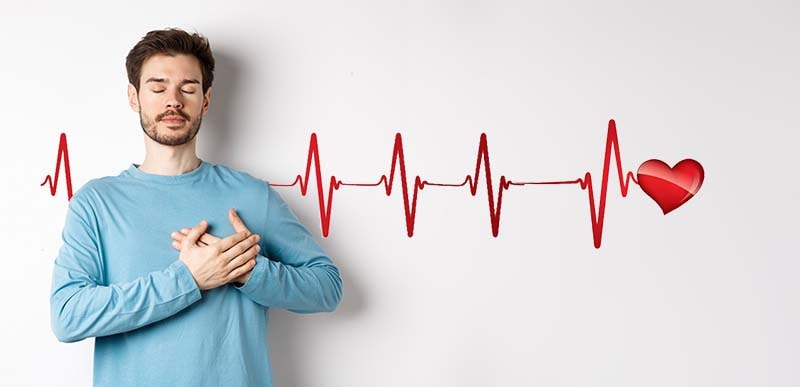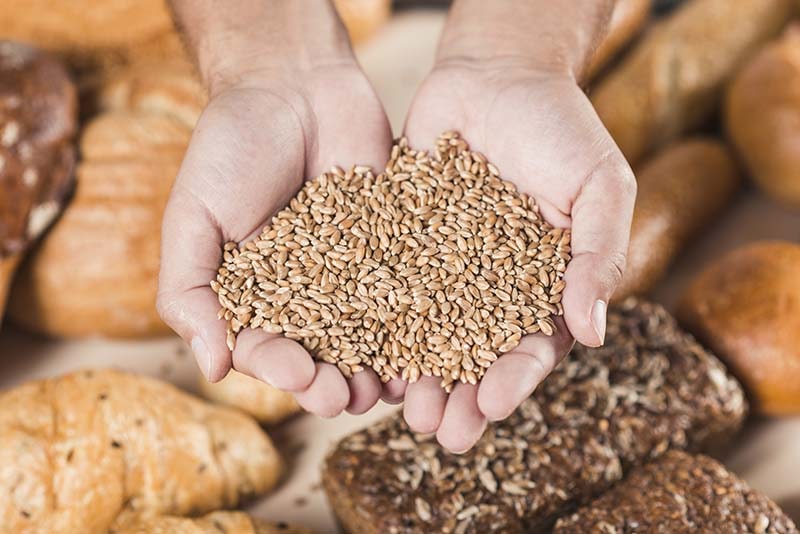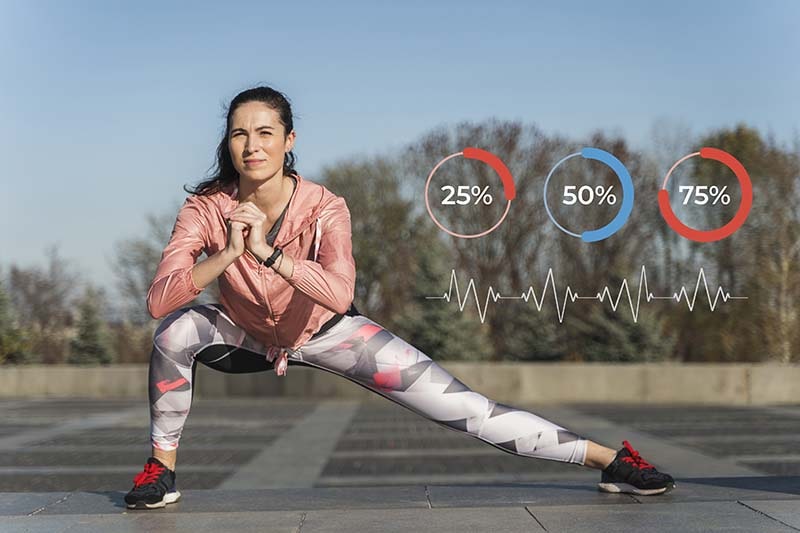we’ll explore What Exercises Burn the Most Calories and how to incorporate them into your routine. Burning calories is essential for maintaining a healthy weight and boosting overall fitness. The right exercises can help you achieve your goals faster while improving strength and endurance. But which workouts burn the most calories? This guide breaks it down for you. From cardio to strength training, discover the exercises that deliver maximum results. Keep reading to find the perfect routine to fuel your fitness journey!
What Exercises Burn the Most Calories and the Factors That Influence It the Factors That Influence It
Calorie burn varies from person to person. Several factors determine how many calories you burn during exercise:
Body Weight and Composition
Heavier individuals burn more calories as they require more energy to move.
Lean muscle mass also boosts calorie burn, even at rest.
Exercise Intensity and Duration
High-intensity exercises burn more calories in less time.
Longer workouts at moderate intensity can also lead to significant calorie burn.
Age and Gender
Younger people generally have a faster metabolism, leading to higher calorie burn.
Men typically burn more calories than women due to greater muscle mass.
Metabolism
A faster metabolism helps you burn calories more efficiently.
Factors like diet, hydration, and activity levels affect your metabolic rate.
Exercise Type
Cardio exercises burn calories quickly during the workout.
Strength training burns fewer calories during the session but increases post-exercise calorie burn.
Understanding these factors can help you tailor your workout routine for maximum calorie burn and better results.
The Science of Calorie Burn: Cardio vs. Strength Training
Understanding how your body burns calories you can help choose the What Exercises Burn the Most Calories for your goals. Both cardio and strength training play key roles, but they work differently.
How Cardio Exercises Burn Calories
Cardio workouts, like running or cycling, elevate your heart rate quickly.
They burn calories during the activity by using oxygen to fuel your muscles.
High-intensity cardio burns more calories in a shorter time.
Why Strength Training Boosts Metabolism
Strength training builds lean muscle, which burns calories even at rest.
During strength workouts, your body uses short bursts of energy for lifting weights.
After a session, your metabolism stays elevated, burning extra calories as your muscles recover.
The Afterburn Effect (EPOC)
High-intensity cardio and strength training trigger excess post-exercise oxygen consumption (EPOC).
This means your body keeps burning calories for hours after the workout.
Cardio vs Strength: What Exercises Burn the Most Calories
Cardio burns more calories during the session, especially at higher intensities.
Strength training builds muscle, increasing your long-term calorie-burning potential.
To maximize results, combining cardio and strength training is ideal. It boosts calorie burn during and after exercise, helping you achieve your fitness goals efficiently.
What Exercises Burn the Most Calories: Top Cardio Workouts
Cardio exercises are known for their calorie-burning potential. Here are the top options to help you torch calories effectively:
High-Intensity Interval Training (HIIT)
Alternates short bursts of intense activity with rest or low-intensity recovery periods.
Burns a significant number of calories in a short time.
Increases post-exercise calorie burn due to the afterburn effect (EPOC).
Running and Sprinting
Running at a steady pace burns calories consistently.
Sprinting pushes your body to maximum effort, increasing calorie burn in less time.
Both exercises improve cardiovascular endurance.
Cycling
Can be done indoors on a stationary bike or outdoors.
Burns a high number of calories, especially during intense rides or hill climbs.
Low-impact, making it easier on joints compared to running.
Rowing
Provides a full-body workout, engaging arms, legs, and core.
High-intensity rowing burns calories while improving strength and endurance.
Effective for building cardiovascular fitness with low joint impact.
Jump Rope
Simple yet highly effective for burning calories quickly.
Increases heart rate and coordination.
Portable and versatile, making it ideal for quick workouts anywhere.
What Exercises Burn the Most Calories: Tips for Maximizing Calorie Burn with Cardio
Incorporate intervals for higher intensity.
Gradually increase speed or resistance.
Aim for consistency and variety to keep workouts engaging.
These cardio exercises are great for burning calories and improving overall fitness, helping you reach your health goals faster.
Strength and Compound Exercises: What Exercises Burn the Most Calories Effectively
Strength and compound exercises are excellent for building muscle and burning calories. These moves engage multiple muscle groups, making your workouts efficient and effective.
Squat to Press
Combines a squat with an overhead press.
Works your legs, glutes, core, and shoulders.
Burns calories by engaging large muscle groups and adding cardio-like intensity.
Renegade Rows
Combines a plank with dumbbell rows.
Targets your core, back, shoulders, and arms.
Boosts calorie burn by requiring strength and balance.
Jump Lunges
An explosive variation of standard lunges.
Engages your quads, hamstrings, and glutes while raising your heart rate.
Excellent for burning calories and improving agility.
Stairs with Weights
Walking or running stairs while holding weights adds resistance.
Targets your legs, glutes, and core.
Increases calorie burn by combining strength and cardio.
Deadlifts
Engages your legs, back, core, and arms.
Builds strength and burns calories due to the large muscle groups involved.
Boosts metabolism, even after the workout.
Benefits of Compound Exercises
Engage multiple muscles simultaneously, maximizing calorie burn.
Improve functional strength and overall fitness.
Increase post-exercise calorie burn due to muscle recovery demands.
Adding these exercises to your routine will help you build strength, burn calories, and achieve a balanced fitness level.
Core and Stability Exercises for Added Burn
Core and stability exercises target the midsection while improving balance and coordination. They also enhance What Exercises Burn the Most Calories by engaging multiple muscle groups.
Planks and Variations
Standard planks strengthen your core, shoulders, and back.
Variations like side planks and plank-to-push-ups add intensity and variety.
Improves posture and overall stability, burning calories through sustained effort.
Mountain Climbers
A dynamic core exercise that also elevates your heart rate.
Targets your abs, shoulders, and legs.
Effective for combining core work with cardio calorie burn.
Stability Ball Rollouts
Engages your abs, lower back, and arms.
Requires control and balance, increasing muscle activation.
Builds core strength while burning calories through sustained tension.
Bird Dogs
A low-impact move for core and lower back strength.
Improves balance and coordination.
Burns calories by challenging stability and control.
Russian Twists
Targets the obliques and overall core.
Can be done with or without weights for added resistance.
Increases calorie burn through rotational movements.
Benefits of Core and Stability Exercises
Enhance balance, posture, and coordination.
Activate multiple muscles for a higher calorie burn.
Improve overall athletic performance and functional fitness.
Incorporating core and stability exercises into your routine will strengthen your midsection and help you burn calories more effectively.
Tips to Maximize Calorie Burn During Workouts
Boost your workout efficiency by adopting strategies to increase What Exercises Burn the Most Calories.These tips are simple yet effective for achieving better results.
Incorporate High-Intensity Intervals
Alternate between high-intensity and low-intensity exercise.
Push your limits during intense phases to burn more calories.
Ideal for both cardio and strength training.
Add Resistance
Use weights, resistance bands, or bodyweight to challenge your muscles.
Resistance increases effort, leading to higher calorie expenditure.
Incorporate compound exercises for maximum efficiency.
Focus on Proper Form
Good form ensures your muscles work efficiently.
Prevents injuries and allows for better engagement of targeted muscles.
Quality over quantity leads to better calorie burn.
Increase Workout Intensity Gradually
Progress by adding more reps, weights, or resistance.
Shorten rest periods between sets for a greater challenge.
Avoid overtraining; allow your body time to adapt.
Stay Consistent
Regular workouts are key to achieving calorie burn goals.
Aim for at least 150 minutes of moderate or 75 minutes of intense activity per week.
Mix cardio and strength sessions for a balanced routine.
Stay Hydrated and Fuel Your Body
Proper hydration improves performance and endurance.
Eat a balanced meal or snack before and after workouts to fuel energy and recovery.
Track Your Progress
Use fitness apps or wearables to monitor calorie burn and intensity.
Tracking helps you stay motivated and adjust workouts as needed.
These tips can help you maximize your calorie burn while keeping your workouts safe and effective.
Choosing the Right Exercise for Your Goals
Selecting the best exercise depends on your fitness goals, preferences, and physical abilities. Here’s how to tailor your routine:
Define Your Fitness Goals
If weight loss is your goal, focus on high-calorie-burning exercises like running or HIIT.
For muscle building, prioritize strength training with compound movements.
To improve endurance, include steady-state cardio like cycling or swimming.
Consider Your Fitness Level
Beginners should start with low-impact exercises like walking or bodyweight movements.
Gradually increase intensity as you build strength and confidence.
Advanced individuals can incorporate heavier weights or high-intensity routines.
Balance Cardio and Strength
A mix of cardio and strength training maximizes calorie burn and overall fitness.
Alternate between the two to prevent overuse injuries and keep workouts engaging.
Choose Exercises You Enjoy
Enjoyable activities, like dancing or hiking, make it easier to stay consistent.
Experiment with different workouts to find what suits your interests.
Adapt to Your Schedule
Short on time? Opt for quick HIIT sessions or bodyweight circuits.
For longer sessions, include a mix of cardio, strength, and flexibility exercises.
Address Physical Limitations
Modify exercises to suit injuries or joint issues.
Low-impact options, like cycling or swimming, are easier on the joints.
Consult a fitness professional for personalized guidance if needed.
Be Open to Change
Update your routine as your fitness level improves.
Incorporate new exercises to challenge your body and avoid plateaus.
Choosing the right exercises ensures you stay motivated and achieve your goals while enjoying the process.
Tracking Progress and Staying Motivated
Tracking your progress and staying motivated are key to achieving long-term fitness goals. Here’s how to keep yourself on track:
Set Realistic Goals
Break your long-term goals into smaller, achievable milestones.
Celebrate each achievement to stay motivated.
Adjust goals as you progress to keep them challenging.
Use Fitness Trackers or Apps
Fitness trackers monitor your activity, heart rate, and calories burned.
Use apps to log workouts, set reminders, and track improvements.
Comparing your progress over time helps you stay motivated.
Track Your Workouts
Keep a workout journal or use a fitness app to record exercises, sets, and reps.
Track the intensity and duration of each session to measure improvements.
Review your progress regularly to adjust and stay on target.
Mix Up Your Routine
Change exercises every few weeks to keep things fresh and avoid plateaus.
Try new activities, like swimming, yoga, or kickboxing, to add variety.
Keeping workouts interesting helps prevent boredom.
Find a Workout Buddy
Partnering with a friend or trainer provides accountability.
Share progress and challenge each other to improve.
A workout buddy can make training more fun and motivating.
Focus on Non-Scale Victories
Track improvements in strength, endurance, or flexibility.
Celebrate the way you feel, not just the number on the scale.
Recognize your body’s improvements in performance and health.
Stay Consistent
Consistency is key to long-term success.
Make exercise a regular part of your routine, aiming for at least 3-4 sessions per week.
Even small, consistent efforts add up over time.
Tracking progress and staying motivated ensure that you continue to challenge yourself and see results.
Conclusion
Choosing the right What Exercises Burn the Most Calories depends on your goals and preferences. A balanced approach, combining cardio and strength training, provides the best results.
Try various workouts like HIIT, running, strength training, and cycling to find what works best for you.Mix up routines to challenge your body and keep things interesting. stay consistent with your workouts to see real progress.Even on busy days, a short, intense session can make a difference. Choose exercises you enjoy to make your fitness journey sustainable. When you enjoy your workouts, you’re more likely to stick with them long-term. Use fitness apps or trackers to measure calorie burn and monitor your improvement. Adjust your workouts as you progress to keep challenging your body.
Remember, burning calories is just one part of your fitness journey. Stay patient, stay consistent, and find joy in the process.











